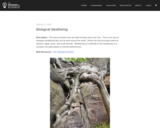
Science Phenomena: KINDERGARTEN - Life and the Environment
- Subject:
- Science
- Material Type:
- Lesson
- Provider:
- The Wonder of Science
- Date Added:
- 10/24/2021

Science Phenomena: KINDERGARTEN - Life and the Environment

Biology is designed to cover the scope and sequence requirements of a typical two-semester biology course for science majors. The text provides comprehensive coverage of foundational research and core biology concepts through an evolutionary lens. Biology includes rich features that engage students in scientific inquiry, highlight careers in the biological sciences, and offer everyday applications. The book also includes clicker questions to help students understand—and apply—key concepts.

An introduction to biology intended for non-science majors. Focus areas include chemical foundations, cell structure and division, genetics, and evolution.
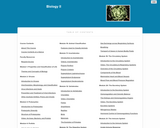
This template course was developed from generally available open educational resources (OER) in use at multiple institutions, drawing mostly from a primary work published by OpenStax College Concepts of Biology, but also including additional open works from various sources as noted in attributions on each page of materials.
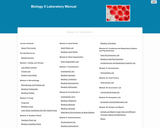
This material is labwork meant to be used in conjunction with the Candela "Biology II" course.

CK-12 Biology Workbook complements its CK-12 Biology book.
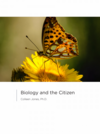
Short Description:
In this survey text, directed at those not majoring in biology, we dispel the assumption that a little learning is a dangerous thing. We hope that by skimming the surface of a very deep subject, biology, we may inspire you to drink more deeply and make more informed choices relating to your health, the environment, politics, and the greatest subject that all of us are entwined in, life itself. This text also includes interactive H5P activities that you can use to evaluate your understanding as you go.
Long Description:
In this survey text, directed at those not majoring in biology, we dispel the assumption that a little learning is a dangerous thing. We hope that by skimming the surface of a very deep subject, biology, we may inspire you to drink more deeply and make more informed choices relating to your health, the environment, politics, and the greatest subject that all of us are entwined in, life itself. This text also includes interactive H5P activities that you can use to evaluate your understanding as you go.
In the adapted textbook, Concepts of Biology, you will find the following units: Unit 1: Principles of Cellular Life Unit 2: Principles of Inheritance Unit 3: Principles of Evolution Unit 4: Principles of Ecology
Word Count: 189879
(Note: This resource's metadata has been created automatically by reformatting and/or combining the information that the author initially provided as part of a bulk import process.)
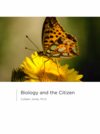
Short Description:
In this survey text, directed at those not majoring in biology, we dispel the assumption that a little learning is a dangerous thing. We hope that by skimming the surface of a very deep subject, biology, we may inspire you to drink more deeply and make more informed choices relating to your health, the environment, politics, and the greatest subject that all of us are entwined in, life itself. This text also includes interactive H5P activities that you can use to evaluate your understanding as you go.
Long Description:
In this survey text, directed at those not majoring in biology, we dispel the assumption that a little learning is a dangerous thing. We hope that by skimming the surface of a very deep subject, biology, we may inspire you to drink more deeply and make more informed choices relating to your health, the environment, politics, and the greatest subject that all of us are entwined in, life itself. This text also includes interactive H5P activities that you can use to evaluate your understanding as you go.
In the adapted textbook, Concepts of Biology, you will find the following units: Unit 1: Principles of Cellular Life Unit 2: Principles of Inheritance Unit 3: Principles of Evolution Unit 4: Principles of Ecology
Word Count: 189359
(Note: This resource's metadata has been created automatically by reformatting and/or combining the information that the author initially provided as part of a bulk import process.)

This may be a helpful resource to support teachers in developing artifacts of learning about food and culture.

This ZOOM video segment shows how to create a self-contained environment and explores evaporation, condensation, and precipitation.

This interactive resource adapted from NASA describes the different temperature, precipitation, and vegetation patterns in seven biomes: coniferous forest, temperate deciduous forest, desert, grassland, rainforest, shrubland, and tundra.

Science Phenomena: 1st grade - Life: Structures and Functions
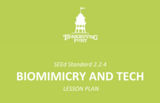
Design a solution to a human problem by mimicking the structure and function of plants and/or animals and how they use their external parts to help them survive, grow, and meet their needs. Define the problem by asking questions and gathering information, convey designs through sketches, drawings, or physical models, and compare and test designs. Examples could include a human wearing a jacket to mimic the fur of an animal or a webbed foot to design a better swimming fin.

This article continues an examination of each of the seven essential principles of the climate sciences on which the online magazine Beyond Weather and the Water Cycle is structured. Principle 3 states that life on Earth depends on, is shaped by, and affects climate. The climate dictates where and how species can survive. The author discusses the scientific concepts underlying the life forms' dependence on the climate and expands the discussion with diagrams, photos, and online resources.
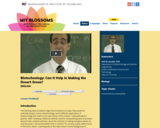
This learning video introduces high school students to a topic they would not ordinarily study in school, biotechnology, and to different applications of biotechnology that relate to the main theme of the module - making the desert greener. After reviewing traditional methods used for manipulating plants to produce desired traits, students will learn about the methods of making transgenic plants. Dr. Ziad discusses a real world problem that is critical in his country, Jordan, where much of the land is desert. A prerequisite to this video lesson is some background in biology.

There are almost as many types of bird beaks as there are types of food that birds like to eat. This collection of images shows a wide range of beaks and the types of foods handled by each.
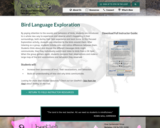
By paying attention to the sounds and behaviors of birds, students are introduced to a whole new way to experience and observe what’s happening in their surroundings, both during their field experience and back home. In this Focused Exploration activity, students pay attention to the birds around them. After listening as a group, students imitate calls and notice differences between them. Students think about and discuss the different messages birds might communicate, then they individually watch and listen to birds from a Sit Spot. When the group gathers again, students compare their observations and make a large map of the bird vocalizations and behaviors they observed.
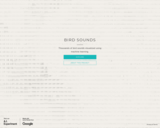
Explore the sounds of birds from all over North America in this interactive graphic.

Stare at one color—but see another. You see color when receptor cells (called cones) in your eye’s retina are stimulated by light. There are three types of cones, and each is sensitive to a particular color range. If one or more of the three types of cones adapts to a stimulus because of long exposure, it responds less strongly than it normally would.

This task asks students to glean contextual information about bird eggs from a collection of measurements of said eggs organized in a scatter plot. In particular, students are asked to identify a correlation and use it to make interpolative predictions, and reason about the properties of specific eggs via the graphical presentation of the data.